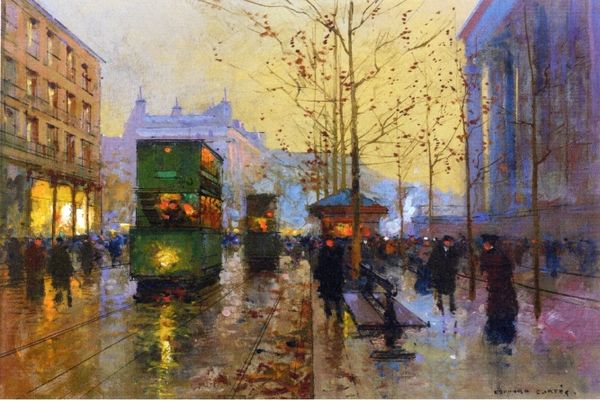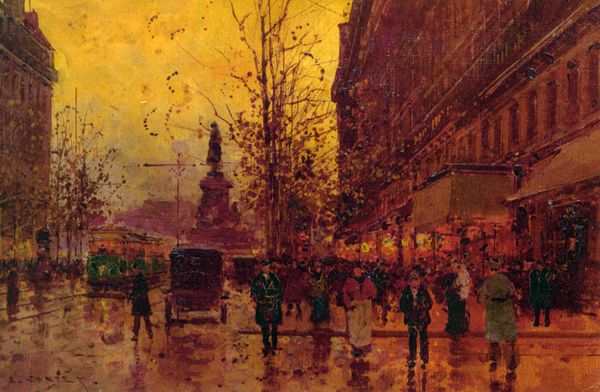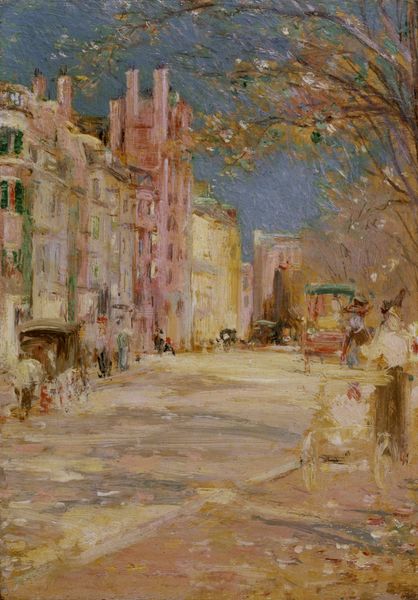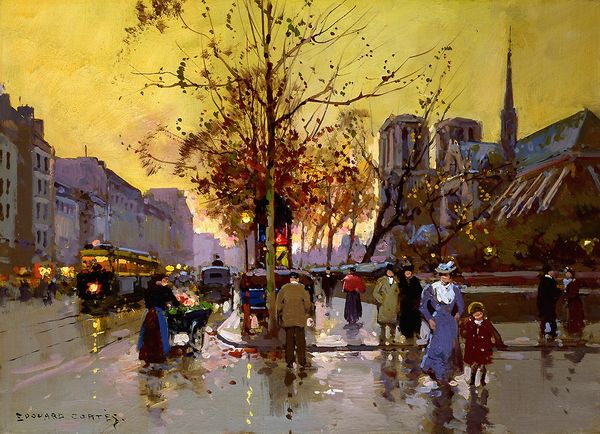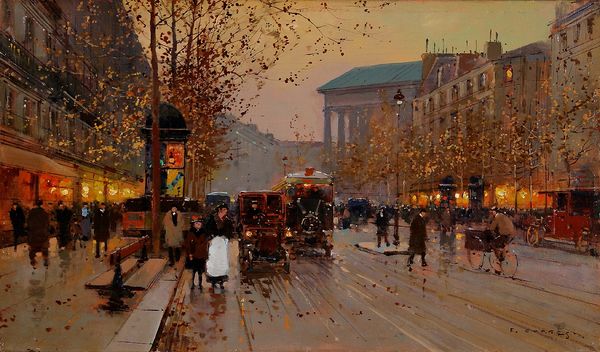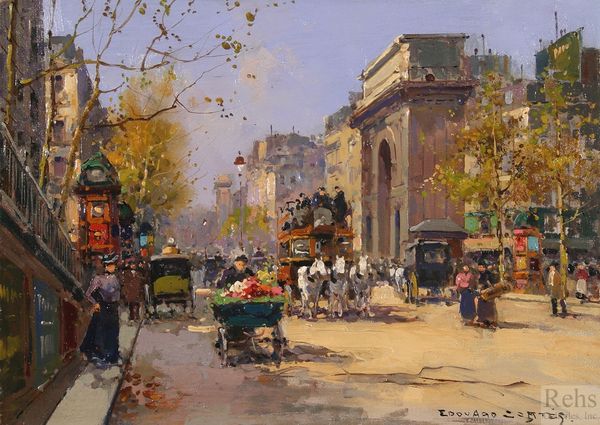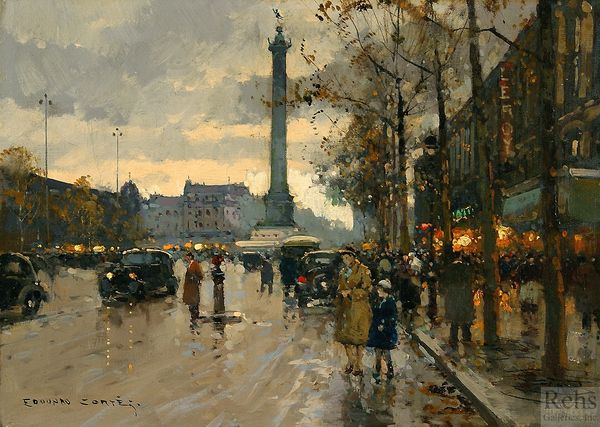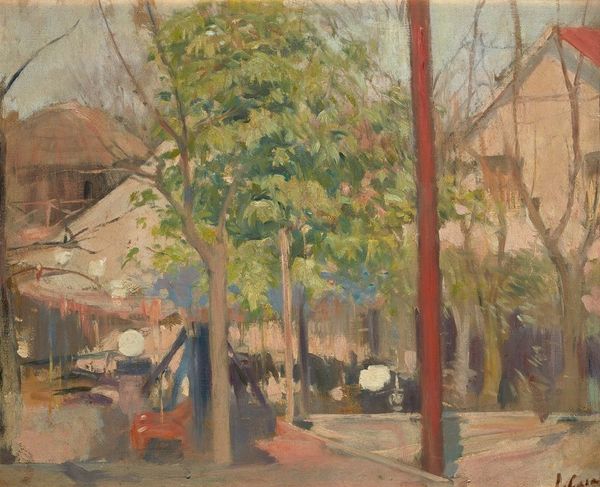
Dimensions: 30.48 x 34.93 cm
Copyright: Public domain
Curator: This is George Luks's "Fifth Avenue, New York," painted around 1920. Editor: My immediate sense is muted splendor. The palette feels constrained, almost hazy, yet the bursts of ochre and reds create a striking visual rhythm. Curator: Luks was part of the Ashcan School, so this Impressionistic lens is being used to document city life, depicting ordinary people in a seemingly grand setting. Who do you think he had in mind as his audience? Editor: Absolutely. The materiality screams "look closer": rough brushstrokes of oil-paint rendering fleeting urban scenes. Think about it—paint becomes a tool for capturing the ephemeral nature of modern experience and also makes it affordable for an up-and-coming working class. Curator: I find that a provocative idea because Luks offers a romanticized vision here, but who is being romanticized? The upper classes riding the bus? Are the other individuals flattened, included to portray an almost ignored social element? Editor: Precisely! It is through the thickness and layering of oil paint on canvas that this dialogue emerges. It is in these marks that you realize what's at play with the social commentary, it brings in labor theory. Curator: We can discuss the gender norms present, too: there are many women on view, but what does it mean to paint a woman onto 5th Avenue versus depicting their lives and contributions inside their own homes? Does it reinforce systemic expectations? Editor: True. Yet, those very constraints you mention fueled the innovative ways artists explored their medium. "How can I portray life honestly given what I have?"—a fascinating negotiation happening at the level of material application. Curator: Luks’s vision, rendered through those impasto techniques, opens avenues for questioning power, representation, and the stories we tell about urban modernity. Editor: I'd agree. Analyzing his material decisions offers compelling clues to decoding this piece.
Comments
No comments
Be the first to comment and join the conversation on the ultimate creative platform.

